For gardeners, poring over the pages of a seed catalog can be a feast for the eyes. Whether it’s heirloom crookneck squash or ‘Green Zebra’ tomatoes, the seed varieties available to home gardeners rival any farmers market. Similarly, going to a nursery and seeing row upon row of baby tomato, lettuce and kale plants can make it hard to decide where to start. What’s a backyard food grower to do?
By growing a small selection of carefully chosen crops, you will give yourself the best opportunity for success. If you’re new to gardening, it’s better to grow just five types of vegetables rather than 15. Over time, you’ll learn which crops and varieties work best for your microclimate, taste and lifestyle.
Here are some of the best vegetables and herbs for urban gardeners of all types, including beginners. In addition to being easy to grow and productive, many of these crops are well-suited to growing in small spaces.
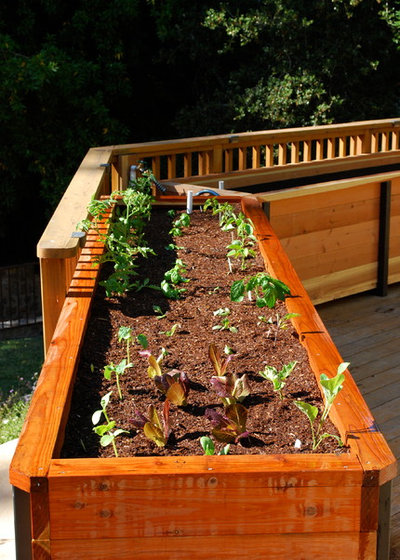
Steve Masley Consulting and Design
Start with favorite vegetables that you regularly buy from the grocery store. If you’re a big fan of kale salads, be sure to plant kale. Radishes are very easy to grow and look gorgeous, but if you’re not a fan of eating them, don’t grow them.
Sweet potatoes and peanuts are popular crops in the American South, but they rarely succeed in northern climates. However, tender greens like spinach thrive in cool environments. To find vegetables that suit your growing region, look for local seed companies, check out what’s being grown in farmers markets and ask neighbors what they’re growing. Find out your area’s average first and last frost dates; these will provide an essential guideline for when to plant seeds.
Your garden space will also inform what you can grow. If your space is small, choose plants with a small footprint. Zucchini can grow in a large container, but their huge, sprawling leaves may take up the better part of a balcony garden.
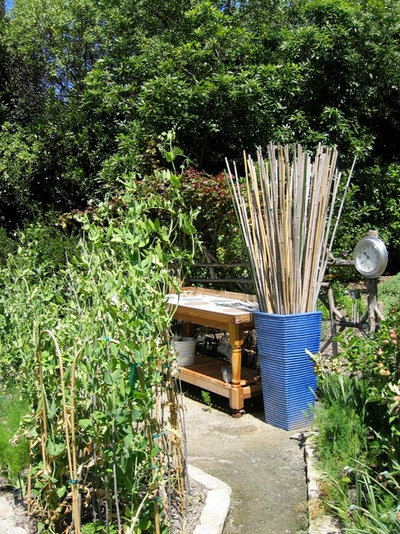
Jackie and the Beanstalk
1. Snap peas. Few things in life rival the flavor of a fresh snap pea right off the vine. Because the sugars in this crop degrade quickly, snap peas truly taste better when grown at home. With their vertical growth, peas don’t take up much room — just be sure to set up a trellis and train them rigorously, as the vines can get unruly. Peas are a cool-season crop and are planted directly into the soil as seeds
in late winter or early spring in most areas.
Tip: Use a pea inoculant (a powder that acts like a probiotic for peas and beans) at the time of planting to ensure success. Look for varieties that are resistant to pea enation mosaic virus and powdery mildew.
When to plant: Sow seeds about four to six weeks before the average last frost date in spring. In mild-winter climates, peas can also be planted in the fall; sow seeds two to three months before the first expected frost date.
Light requirement: Full sun to partial shade; provide afternoon shade in hot climates.
See how to grow snap peas and other peas
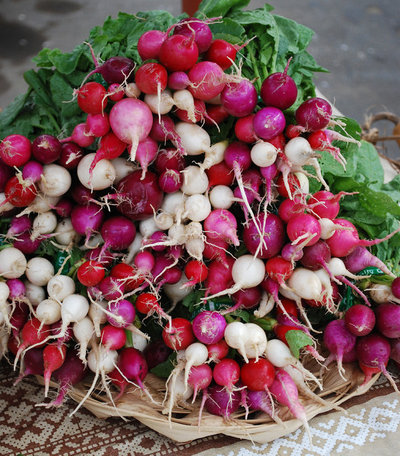
Jocelyn H. Chilvers
2. Radishes. Cheery, colorful radishes are some of the first vegetables gardeners can harvest in the spring. This attractive cool-season plant grows quickly and takes up little room, making it an ideal choice for small-space gardeners. Don’t know what to do with radishes? For a classic French dish, slice them raw (wash and scrub well to remove soil) and serve with salt and butter. The leaves are also edible and can make a good substitute for cooked spinach.
When to plant: Sow seeds two to three weeks before the average last frost date in spring, and in late summer four to six weeks before the average first fall frost. Continue sowing seeds every two weeks in both spring and fall.
Light requirement: Full sun to partial shade
See how to grow radishes
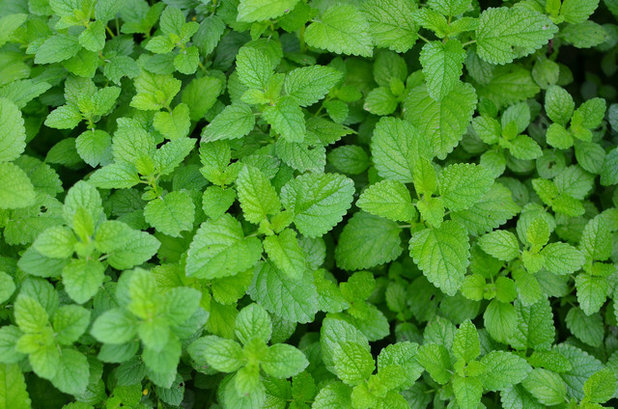
Amy Renea
3. Mint. Want your own supply of peppermint tea? It’s as easy as growing a peppermint plant. This perennial herb grows so vigorously that it should always be planted in containers — otherwise, it may take over your entire garden. Keep your mint tidy with regular trimming, or allow it to go to flower and attract tons of bees. This hard-to-kill plant is a great choice for apartment gardeners.
When to plant: Purchase seedlings from a garden supply store, or ask a friend to dig up a section of his or her plant. Plant seedlings in early spring, or in the fall in warm-winter climates.
Light requirement: Full sun to partial shade
See how to grow mint
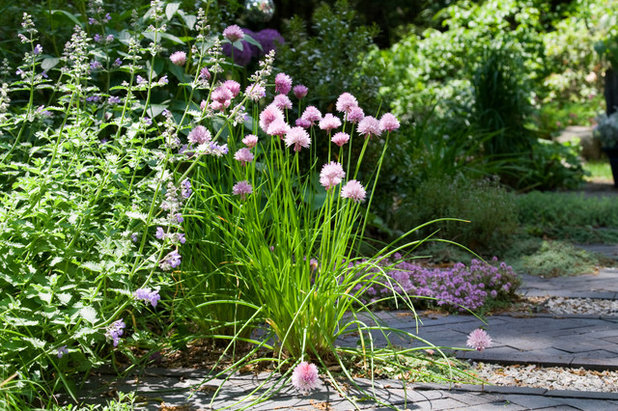
Matthew Cunningham Landscape Design LLC
4. Chives. Snipped chives taste delicious on eggs, pasta — just about everything. In grocery stores, they can be difficult to find and expensive, but in gardens, they’re incredibly easy to grow. This perennial herb has a long harvest season and will come back year after year if you plant it in nice rich soil. Try growing them in a large pot right outside your kitchen window. Harvest chives by simply giving them a “haircut” with kitchen scissors as needed.
When to plant: Purchase seedlings from a garden supply store, or start seeds indoors eight to ten weeks before the average last frost date. Plant seedlings in the early spring. Chives are perennials and take several years to reach their full size, so harvest lightly until your plants are well-established.
Light requirement: Full sun
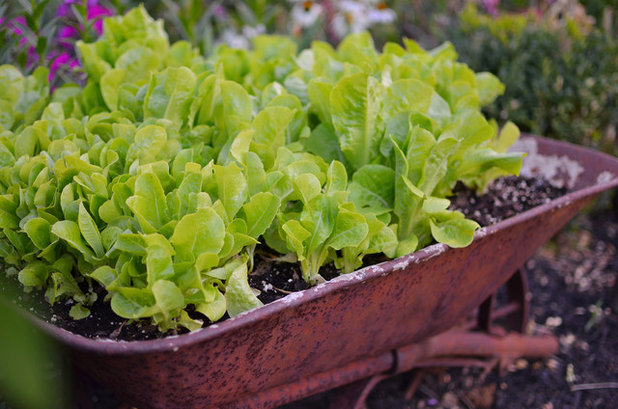
Amy Renea
5. Mesclun mix. The word “mesclun” comes from the Provençal word for “mixture.” In gardening terms, mesclun is a combination of seeds that are planted together to create a ready-made baby salad featuring a variety of colors, flavors and textures. The result is similar to the packaged salad mixes you can find in grocery stores, but far more fresh and exciting. Seed catalogs often have a variety of mesclun mixes to choose from, typically featuring arugula, mustard greens and lettuce.
Tip: To achieve success with mescluns, sow seeds thinly (about one seed per square half-inch). Plant some each week and harvest leaves with scissors as soon as they look ready.
When to plant: Plant a little mesclun every one to two weeks from early spring to early summer. In mild-winter climates, plant again from late summer to mid-fall. Water well and protect from hot temperatures.
Light requirement: Full sun to partial shade
See how to grow salad greens
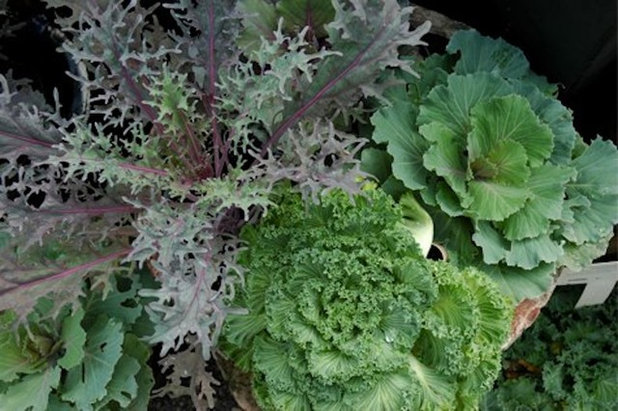
J. Peterson Garden Design
6. Kale. This popular low-maintenance green is a must for many gardeners. If you’re growing in containers, sow seeds similarly to mesclun mixes and harvest the baby greens. In raised beds with rich soil, many varieties will grow more than 6 feet tall. Choose your kale variety according to your climate and season. ‘Lacinato’ kale, also called dinosaur kale, is a Mediterranean plant that does well in the summer or in warm environments. Curly Scotch kale and tender Siberian kale are great winter crops that can tolerate frost.
When to plant: Sow seeds in early to midsummer for fall and winter harvest. For a summer harvest, plant seeds in spring two weeks to a month before the last frost date.
Light requirement: Full sun; provide afternoon shade in very hot climates.
See how to grow kale
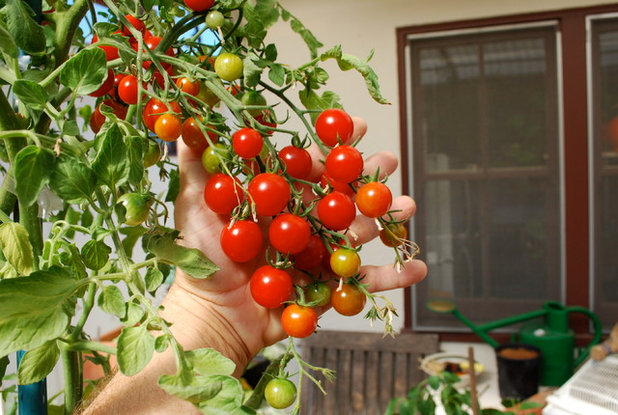
Steve Masley Consulting and Design
7. Cherry tomatoes. Tomatoes are one of the most rewarding crops to grow in a home garden. If you’re a new gardener, start with a classic disease-resistant cherry tomato like ‘Sweet Million’. Be sure to build a trellis for the long vines, and plant them in a sunny spot where they can be protected from rain. Tomatoes are an ideal choice for container gardens.
When to plant: Set out starts or nursery plants when the soil is warm and there’s no danger of frost. Start seeds indoors five to eight weeks before your planned planting date.
Light requirement: Full sun
See how to grow cherry tomatoes and other tomato types
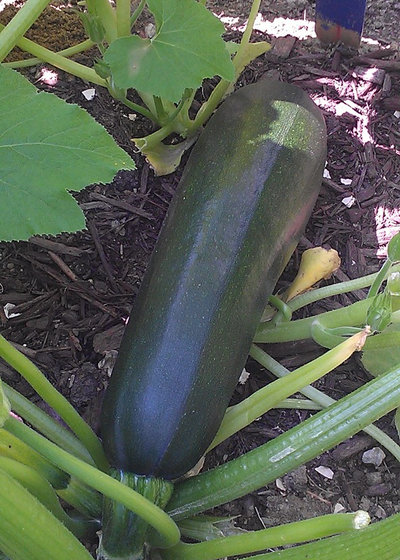
Bonnie D Loubier's Landscape Design
8. Zucchini. Get ready, because once your zucchini plants start producing, it’ll be hard to keep up with them. Zucchini are famous for producing more food than most people can handle. Check your plants every day or two, and harvest them as soon as they’re a little over a foot long (bigger fruits can get tough and stringy). Zucchini are great in baking and popular as a low-carb pasta substitute. Just make sure that you have enough space in your garden for this sprawling plant.
When to plant: Sow seeds about two weeks after the last frost date when soil temperatures reach 70 degrees Fahrenheit (21 degrees Celsius). You can start seeds indoors about one week before that date.
Light requirement: Full sun
See how to grow zucchini and other types of squash
By choosing a small selection of crops that you enjoy eating, and that are suited to your growing environment, you’ll set yourself up for a fun and successful gardening experience. Enjoy the process of learning which plants work best for you.
Browse more stories on edible gardens





